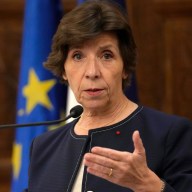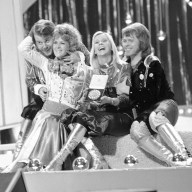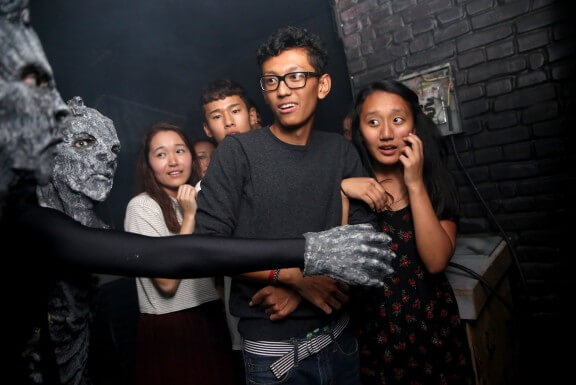 Judy Garland was at her career best in George Cukor’s “A Star Is Born.”
Judy Garland was at her career best in George Cukor’s “A Star Is Born.”
Credit: Lincoln Center
Golden Age Hollywood director George Cukor is primarily known as a king of “women’s pictures,” among them 1939’s “The Women,” which has not a single Y chromosome onscreen. But about 50 films in about as many years makes him hard to pigeonhole. Besides, not even Cukor liked that description.
As you can see for yourself — with the Film Society of Lincoln Center’s herculean, complete Cukor retrospective, which runs through early January — his CV spans genres. It includes literary adaptations (his ‘30s versions of “Little Women,” “Romeo and Juliet”), comedies (“The Philadelphia Story”), one of the best Tracy & Hepburn pictures (“Adam’s Rib”) and one of the worst (“Keeper of the Flame”). He directed the final movies of Greta Garbo (“Two-Faced Woman”) and Marilyn Monroe (“Something’s Got to Give,” of which only 37 usable minutes were filmed). There’s even the occasional musical (“My Fair Lady”).
What unites them is a certain sophistication. His comedies never let loose, like the screwballs of the ‘30s, but keep their appearances even when, as in “Pat and Mike,” Spencer Tracy and Katharine Hepburn run afoul of a hood played by a young Charles Bronson. It’s long been a cliche that Cukor’s not-so-secret homosexuality explains his peerless work with actresses. But he was as sharp with the men: James Mason is arguably even better than a career best Judy Garland in “A Star Is Born,” his gutting musical remake of a source he had already filmed in 1932 as “What Price Hollywood?” (He turned down the 1937 “A Star Is Born,” helmed by William Wellman, but was nowhere to be seen for the 1976 version with Barbra Streisand and Kris Kristofferson.)
Possibly his most famous film was one that only features some of his work: After a few weeks of shooting, he was famously fired from “Gone with the Wind” (not included in the series, obviously), a project he had worked on for over a year prior. The rumor was that Clark Gable was a homophobe, or that Cukor had been one of his johns during his pre-fame days as a gigolo on the gay circuit and Gable felt uncomfortable. Of course, that hadn’t stopped the two from working together on 1934’s crime pic “Manhattan Melodrama,” the movie John Dillinger watched minutes before his death. Cukor, in a 1976 interview, still claimed ignorance over his firing.
Cukor slowed in his later years. 1960’s “The Chapman Report” is a stodgy fictionalization of the Kinsey Reports, but it’s as though he’s personally bidding farewell to the culture he helped create. After winning his only director Oscar for “My Fair Lady,” his films became strange and unmoored. The R-rated “Justine” is borderline experimental at times, while 1975’s “The Blue Bird,” with Elizabeth Taylor in Russia, was so odd everyone assumed he’d gone senile. He hadn’t, though “Rich and Famous,” his 1981 swan song, with Jacqueline Bisset and Candice Bergen (who will present the film), is notable for seeming unstuck in time.
But there are more pockets of his career than his latter years that have gone underexplored. With this and the epic Barbara Stanwyck retro at Film Forum, films fans should have their hands full.
The Discreet Charm of George Cukor
Dec. 13 through Jan. 7
The Film Society of Lincoln Center
www.filmlinc.com

















